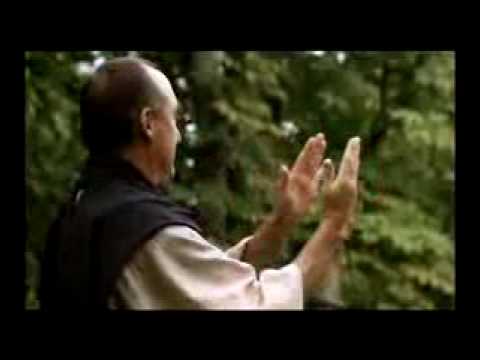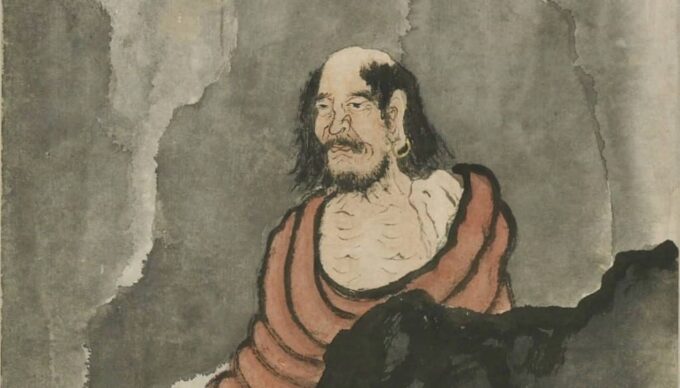Bodhisattva is literally a living being (sattva) who aspires to enlightenment (bodhi) and carries out altruistic practices. The term ‘bodhisattva’ literally means ‘one who has enlightenment as his/her essence’, from bodhi (awakening or enlightenment) and sattva (essence). It is not simply another term for a Buddha, though: a bodhisattva is a being who is destined for enlightenment rather than one who has gained it already. A bodhisattva is also normally thought of as consciously working towards enlightenment: For this reason, the earliest use of the term ‘bodhisattva’ refers to Siddhartha Gautama before he gained enlightenment, and also in his previous lives.
The bodhisattva ideal is central to the Mahayana Buddhist tradition as the individual who seeks enlightenment both for him- or herself, and for others. The bodhisattva’s greatest characteristic is the compassion, the empathetic sharing of the sufferings of others.
A bodhisattva makes four vows, expressing a determination to work for the happiness of others. The bodhisattva vow is solemnly made before one’s master in a special ritual, and involves four pledges: to save all beings from difficulties, to destroy all evil passions, to learn the truth and teach others and to lead all beings to Buddhahood.
“However innumerable sentient beings are, I vow to save them; however inexhaustible the passions are, I vow to master them; however limitless the teachings are, I vow to study them; however infinite the Buddha-truth is, I vow to attain it.”
However many beings there may be, the bodhisattva will save them from samsara and lead them not just to arhatship, but to Buddhahood. What’s more, the bodhisattva will not ‘cross the threshold’ into enlightenment him/herself, until this goal is achieved. If the bodhisattva were to do this, they would pass into parinirvana and no longer be reborn, and so would no longer be able to help other beings, so the bodhisattva is traditionally envisaged as pausing on the brink, turning back, and voluntarily taking rebirth to help others.
Buddhism asserts that the path of the bodhisattva is not an otherworldly undertaking for people with unique gifts of compassion or wisdom. Rather, the life-condition of bodhisattva is inherent in the lives of ordinary men and women, and the purpose of Buddhist practice is to strengthen that state until compassion becomes the basis of all our actions.
In addition to compassion, the vows reflect the bodhisattva’s commitment to self-mastery, to study and learning, to the attainment of wisdom. None of these is pursued just to improve or adorn the self; at the base of all these efforts is always the determination to remove the sufferings of others, and to replace them with the ultimate freedom.
According to Mahayana tradition, a bodhisattva needs to be able to give up absolutely anything for the sake of other beings, including his own life over and over again. If the bodhisattva is not yet generous enough to do this, he/she still has a way to go. The bodhisattva also needs infinite reserves of patience, because it will take a countless number of lifetimes to reach his/her goal, and humble: he/she can’t even take pride in saving sentient beings who really ultimately exist (see following section on Emptiness). The bodhisattva should even be willing to save others from bad karma by doing necessary deeds for which they would subsequently suffer (such as murder), on the occasional extreme occasion when this would be helpful to leading all beings to enlightenment.
While many people may at first be inspired to practice Buddhism by the desire for personal happiness, to overcome illness or some other seemingly insurmountable challenge, as their life-state expands, they naturally develop a deeper concern for the happiness of others. Perceiving the interconnectedness of all beings, they take compassionate action, including sharing with others the insights of Buddhism, so they may also tap into the same rich inner resources that lie within their lives.
The bodhisattva does not work for himself or herself alone until he/she reaches the freedom from the samsaric cycle. Related to this is the doctrine of anatta (insubstantiality) and the implications the Mahayana believe this to have: that we are not in fact ultimately distinct from others, but actually our interests are at one with theirs. If the idea that we exist separately from others is ultimately one of the illusions of samsara, it would seem contradictory that we should gain enlightenment for ourselves. The Mahayana doctrine of the bodhisattva faces this difficulty head-on.
In one Mahayana text, the Perfection of Wisdom in 8000 verses, the bodhisattva is compared to a hero who is lost in a terrible forest with his family. Here the forest represents samsara and his family is all other beings. The hero wouldn’t think of abandoning his family there to save himself. Instead he would do his utmost to reassure them and save them from peril.
The bodhisattvas found in art and literature are sometimes called transcendent bodhisattvas. They are beings who have realized enlightenment but who remain active in the world, appearing in many forms to help others and lead them to enlightenment. They are venerated and called upon for help in time of need. Advanced bodhisattvas are also widely represented symbolically in the Mahayana, both in visualisation practices and in art. These figures represent enlightenment generally, as do Buddha figures of various types, but in particular the qualities of the bodhisattva, of endless dedication to bringing all beings to Buddhahood. Some of the most widely known of these are Avalokiteshvara (“Lord who looks down”), the Bodhisattva of Compassion, and Manjushri, the Bodhisattva of Wisdom. Avalokiteshvara is often represented with 1000 arms, each of which is reaching out to help all sentient beings. In Chinese Buddhism, Avalokiteshvara became the widely revered female bodhisattva Kwan-Yin, and in Japanese Buddhism Kannon (after which the electronics company Canon is named!).
The path of the bodhisattva is inseparable from the true practice of Chan. While actively cultivating the methods of dhyana, the Chan practitioner follows the bodhisattva path as the most effective way of lessening vexation, alleviating karma and helping sentient beings. When all the practices of the bodhisattva are harmonious and perfect, one is then practicing the One Buddha Vehicle.
Photo credit: nepal statue




